- Choosing the Right Cucumber Variety
- Growing Season
- Taste and Texture
- Disease Resistance
- Growing Habit
- Harvesting Preferences
- Preparing the Ground for Planting
- Planting Cucumber Seeds or Seedlings
- Planting Cucumber Seeds
- Transplanting Cucumber Seedlings
- Providing Optimal Watering and Drainage
- 1. Watering frequency
- 2. Watering method
- 3. Mulching
- 4. Drainage
- Providing Proper Sunlight and Temperature
- Sunlight Requirements
- Temperature Requirements
- Soil Considerations
- Sun and Shade Protection
- Importance of Proper Sunlight and Temperature
- Fertilizing and Controlling Pests
- 1. Choosing the Right Fertilizer
- 2. Applying Fertilizer
- 3. Side-Dressing
- 4. Watering and Fertilizer
- Controlling Pests
- Pollination: Understanding the Role of Bees
- Why are Bees Important for Pollination?
- Ensuring Effective Pollination
- Conclusion
- Staking and Supporting Cucumber Plants
- Staking
- Supporting
- Conclusion
- “Question-Answer”
- Should I tie up my cucumber plants?
- What is the best way to tie up cucumber plants?
- Can I grow cucumbers without tying them up?
- What are the advantages of tying up cucumbers?
- Can I use any type of support for tying up cucumbers?
- When is the best time to start tying up cucumber plants?
- What should I do if cucumber plants outgrow the support?
- “Video” How to Grow Cucumbers, Complete Growing Guide
Are you a cucumber lover and dreaming of growing your own fresh cucumbers in your backyard? Look no further, as we have a guide to help you with the decision of whether or not to tie your cucumber plants. With the right information and a bit of care, you can enjoy the delicious taste of homegrown cucumbers all summer long.
When it comes to cucumber plants, one of the key decisions you’ll need to make is whether or not to tie them. Tying your cucumber plants can provide several benefits, such as improved air circulation, support for heavy fruits, and easier harvesting. However, some gardeners argue that cucumber plants left to sprawl on the ground can also thrive and produce high yields.
If you decide to tie your cucumber plants, the first step is to select a suitable trellis or support system. A trellis can be made from simple materials like bamboo poles or sturdy wire mesh. The next step is to gently tie the main stem of each cucumber plant to the trellis using soft plant ties or twine. As the plants grow, you may need to periodically adjust the ties to avoid any damage to the stems.
On the other hand, if you choose not to tie your cucumber plants, they will naturally sprawl along the ground. This can provide a more casual and rustic look to your garden. To prevent the fruits from touching the ground, you can place a layer of straw or mulch underneath the plants. This will help reduce the risk of disease and rotting. Additionally, you should regularly prune any side shoots to encourage the plants to focus their energy on fruit production.
In conclusion, whether to tie or not to tie your cucumber plants is a matter of personal preference and the specific conditions of your garden. Both methods can result in successful cucumber cultivation. The choice ultimately comes down to your gardening style and the look you want to achieve in your garden. Whichever method you choose, with the right care and attention, you’ll be rewarded with an abundant harvest of delicious cucumbers.
Choosing the Right Cucumber Variety
Choosing the right cucumber variety is an important step in successfully growing cucumbers in the ground. There are many different types of cucumbers to choose from, and each variety has its own unique characteristics. Here are some factors to consider when selecting a cucumber variety:
Growing Season
Cucumber varieties can be categorized as either “short-season” or “long-season” cucumbers. Short-season cucumbers mature in a shorter period, typically around 50-60 days, making them suitable for regions with shorter growing seasons or for gardeners who want to harvest cucumbers earlier. Long-season cucumbers, on the other hand, take longer to mature, usually around 60-70 days or more. These cucumbers are well-suited for regions with longer growing seasons or for gardeners who want a more extended harvest period.
Taste and Texture
Another factor to consider when choosing a cucumber variety is the taste and texture of the fruit. Some cucumbers are known for their crisp texture and refreshing taste, while others may have a softer texture and a more mild flavor. If you prefer a crisper cucumber, look for varieties that are described as “crisp” or “crunchy.” If you prefer a softer cucumber, opt for varieties that are described as “smooth” or “mild.”
Disease Resistance
Cucumbers can be susceptible to various diseases, such as powdery mildew, cucumber mosaic virus, and bacterial wilt. When selecting a cucumber variety, it’s essential to choose one that has built-in disease resistance. Look for varieties that are labeled as resistant or tolerant to common cucumber diseases in your area.
Growing Habit
Cucumber varieties can be categorized into two main growing habits: bush cucumbers and vining cucumbers. Bush cucumbers have a compact growth habit and do not require trellising or support. They are suitable for smaller gardens or containers. Vining cucumbers have a more sprawling growth habit and will require trellising or support to keep the plants off the ground. They are the best choice for larger gardens with ample space.
Harvesting Preferences
Consider how you prefer to harvest cucumbers when selecting a cucumber variety. Some cucumbers produce fruits that are best harvested when they are small and immature, while others are better left on the vine until they reach a larger size. If you prefer to harvest smaller cucumbers for pickling or slicing, choose a variety that is known for its high yields of smaller fruits. If you prefer larger cucumbers, look for varieties that are described as “burpless” or “slicer” cucumbers.
By considering these factors and doing some research on different cucumber varieties, you can choose the one that best suits your preferences and growing conditions. Remember to read the seed packet or plant label for specific information on each variety to ensure you make the right choice. Happy cucumber growing!
Preparing the Ground for Planting
Before you start planting cucumbers in the ground, it is important to prepare the soil to create the optimal growing conditions. Here are some steps to follow:
- Choose the right location: Select a spot in your garden that receives full sun for at least 6-8 hours a day. Cucumbers thrive in warm weather, so make sure the location provides the necessary heat and sunlight.
- Clear the area: Remove any weeds, rocks, or other debris from the planting area. These can compete with the cucumber plants for nutrients and water.
- Till the soil: Use a garden tiller or a digging fork to loosen the soil to a depth of about 8-10 inches. This will enhance the drainage and aeration of the soil, allowing the cucumber roots to grow deep and spread out.
- Improve the soil: If the soil in your garden is heavy or has poor drainage, you can amend it by adding organic matter such as compost or well-rotted manure. This will improve the soil structure, fertility, and moisture retention.
- Test the soil pH: Cucumbers prefer a slightly acidic soil with a pH level between 6.0 and 7.0. Use a soil testing kit to determine the pH level of the soil and adjust it if necessary by adding lime to raise the pH or sulfur to lower it.
- Provide trellis or support: Decide whether you will be growing your cucumbers vertically on a trellis or allowing them to sprawl on the ground. If you plan to use a trellis, install it before planting the cucumbers to avoid damaging the roots later on.
By following these steps, you will ensure that the ground is prepared properly for planting cucumbers. This will give your cucumbers the best chance to thrive and produce a bountiful harvest.
Planting Cucumber Seeds or Seedlings
There are two main ways to start growing cucumbers: planting cucumber seeds directly in the ground or transplanting seedlings. Both methods have their benefits and considerations, so it’s important to choose the one that suits your gardening style and needs.
Planting Cucumber Seeds
If you prefer starting from scratch, planting cucumber seeds directly in the ground is a great option. Here are some steps to follow:
- Prepare the soil: Cucumbers thrive in well-drained soil with a pH level between 6 and 7. Ensure the soil is loosened and enriched with organic matter.
- Select a planting location: Choose a spot with full sun exposure and enough space for the cucumber plants to spread out.
- Direct sow the seeds: Dig holes approximately 1-2 inches deep and space them about 12-24 inches apart. Place 2-3 seeds in each hole and cover them with soil.
- Water the seeds: Gently water the planted seeds to keep the soil moist. Avoid overwatering, as it can lead to rot or fungal issues.
- Thin and mulch: Once the seedlings emerge and grow a few leaves, thin them out, leaving only the strongest seedling in each hole. Mulching around the plants can help retain moisture and suppress weed growth.
- Support the vines: As the cucumber plants grow, you may need to provide them with support, such as trellises or cages, to prevent the vines from sprawling and to promote airflow and fruit production.
Transplanting Cucumber Seedlings
If you prefer a head start and want to avoid the germination process, transplanting cucumber seedlings is a good choice. Here’s how to do it:
- Buy or start seedlings: Purchase healthy cucumber seedlings from a nursery or start your own by planting seeds indoors and allowing them to grow until they have a few true leaves.
- Prepare the soil: Choose a location with well-drained soil, and amend it with organic matter if needed.
- Transplant the seedlings: Dig holes that are slightly larger than the root ball of the seedlings. Space the holes about 12-24 inches apart. Carefully remove the seedlings from their containers and place them in the holes, ensuring that the top of the root ball is level with the soil surface.
- Water the transplants: After planting the seedlings, thoroughly water the soil to help them establish themselves in their new environment.
- Provide support: Like with direct-sown cucumber plants, provide support for the vines as they grow.
Whether you choose to plant cucumber seeds or transplant seedlings, be sure to monitor the plants for watering needs, pests, and diseases. With proper care and attention, you’ll be enjoying a bountiful cucumber harvest in no time!
Providing Optimal Watering and Drainage
Proper watering and drainage are crucial for the successful growth of cucumbers in the ground. Cucumbers need consistent moisture, but overwatering can lead to root rot and other diseases. Here are a few tips to provide optimal watering and drainage for your cucumber plants:
1. Watering frequency
- Water your cucumber plants deeply at least once a week
- During hot and dry weather, increase the frequency to twice a week
- Avoid frequent shallow watering, as it can lead to shallow root development and weak plants
2. Watering method
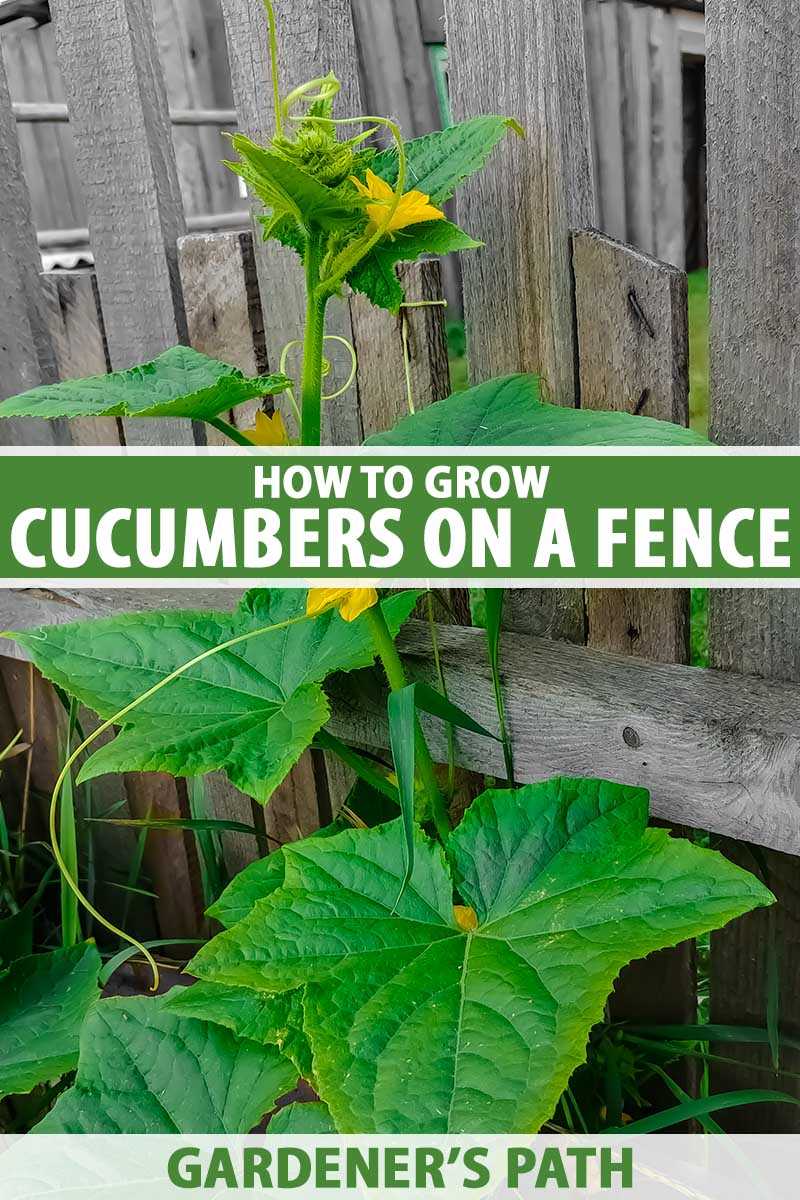
- Avoid overhead watering, as it can encourage the spread of fungal diseases
- Instead, use a drip irrigation system or water the plants directly at the base
- This helps to keep the foliage dry and prevent the development of diseases
3. Mulching
- Apply a layer of organic mulch around the cucumber plants
- Mulch helps to retain moisture in the soil and regulate soil temperature
- It also helps to suppress weed growth, which can compete with cucumbers for water and nutrients
4. Drainage
- Ensure good soil drainage to prevent waterlogging
- If your soil tends to retain water, consider adding organic matter such as compost or sand to improve drainage
- Avoid planting cucumbers in low-lying areas where water tends to collect
By following these watering and drainage practices, you can provide optimal growing conditions for your cucumber plants and increase your chances of a successful harvest.
Providing Proper Sunlight and Temperature
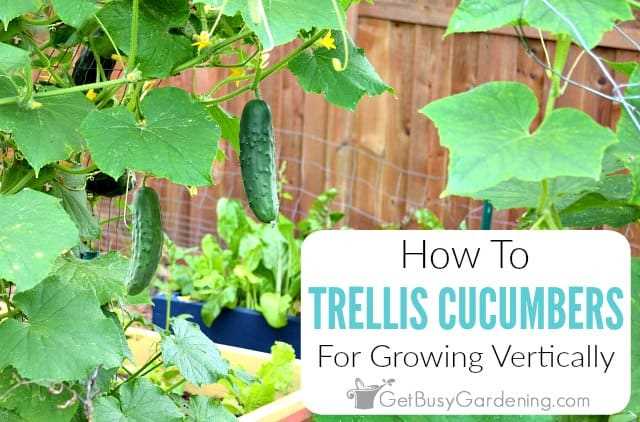
Proper sunlight and temperature is crucial for the successful growth of cucumbers in the ground. Cucumbers thrive in warm and sunny conditions, so it’s important to ensure that they receive enough sunlight throughout the day.
Sunlight Requirements
Cucumbers require at least 6-8 hours of direct sunlight daily. Choose a location for planting your cucumbers where they will receive maximum sunlight exposure. This will help in chlorophyll production and promote healthy growth.
Temperature Requirements
Cucumbers prefer warm temperatures and cannot tolerate frost. The ideal temperature range for cucumber growth is between 70-85°F (21-29°C). If you live in a region with cooler temperatures, consider using row covers or other protective measures to extend the growing season.
In cooler climates, cucumber plants can be started indoors or in a greenhouse and then transplanted outside once the threat of frost has passed.
Soil Considerations
Cucumbers require well-draining soil that is rich in organic matter. The soil pH should be between 6.0-7.0 for optimal growth. Adding compost or well-rotted manure to the soil before planting will help improve its nutrient content and drainage.
Sun and Shade Protection
While cucumbers need ample sunlight, they also benefit from some shade during the hottest part of the day. In extreme heat, cucumbers can suffer from sunburn or heat damage. Providing shade in the afternoon, such as using shade cloth or planting cucumbers near taller plants that can provide shade, can help protect them from excessive heat.
Importance of Proper Sunlight and Temperature
Providing cucumbers with proper sunlight and temperature is essential for their overall health and productivity. Insufficient sunlight can lead to weak plants, poor fruit development, and increased susceptibility to pests and diseases. Similarly, extreme temperatures, especially heat, can cause stress and reduce fruit set.
By ensuring optimal sunlight and temperature conditions for your cucumbers, you will promote healthy growth, increase fruit yield, and enjoy a bountiful harvest.
Fertilizing and Controlling Pests
Proper fertilization is essential for the healthy growth of cucumber plants. Here are some tips on fertilizing your cucumber plants:
1. Choosing the Right Fertilizer
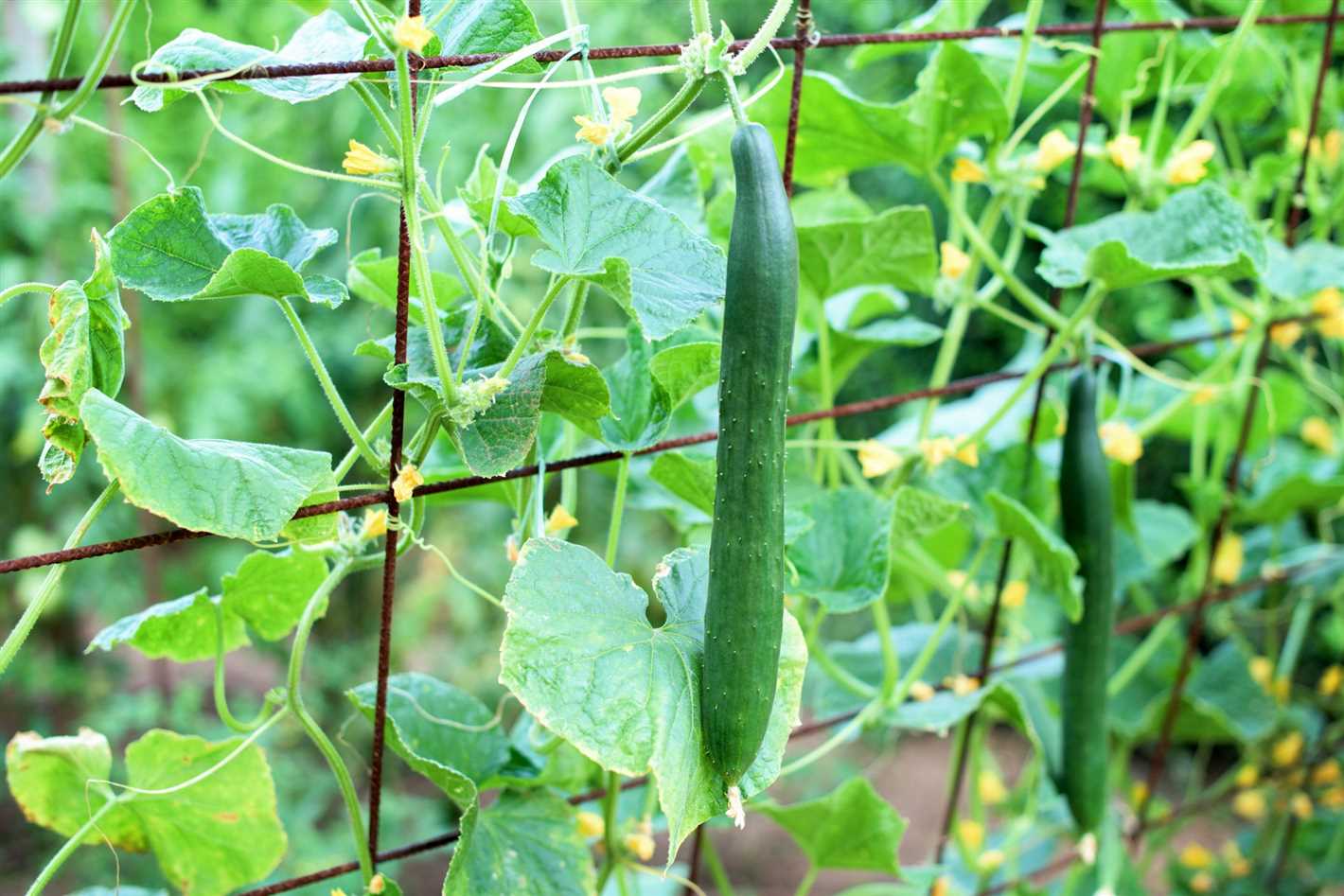
When it comes to fertilizing cucumbers, it is important to choose a fertilizer that is rich in nitrogen, phosphorus, and potassium (NPK). Look for a balanced fertilizer with equal proportions of these nutrients, such as a 10-10-10 or 14-14-14 fertilizer.
2. Applying Fertilizer
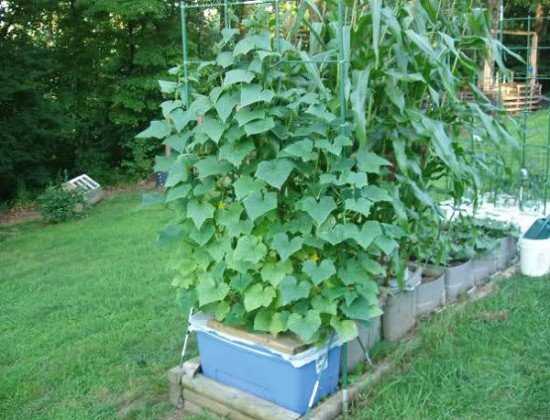
Apply the fertilizer at the time of planting or when the first true leaves appear. Use a granular fertilizer and follow the package instructions for the recommended amount to apply per square foot or per plant. Apply the fertilizer evenly around the base of the plants.
3. Side-Dressing
Side-dressing is the process of applying additional fertilizer to the soil around the plants as they grow. This can be done by sprinkling a small amount of fertilizer around the base of the plants about 4-6 weeks after transplanting. Gently scratch the fertilizer into the soil and water thoroughly.
4. Watering and Fertilizer
Water the plants after applying fertilizer to help the nutrients dissolve and reach the roots. It is important to maintain consistent moisture levels in the soil to ensure proper uptake of nutrients.
Controlling Pests
Cucumber plants are susceptible to various pests that can damage the foliage and reduce yields. Here are some common pests and methods for controlling them:
- Aphids: These small, soft-bodied insects can be controlled by spraying the plants with a mild soap solution or using insecticidal soap.
- Cucumber Beetles: These yellowish-green beetles can transmit diseases to cucumber plants. Use floating row covers or apply insecticides labeled for cucumber beetle control.
- Spider Mites: These tiny pests can cause yellowing and stunted growth. Regularly misting the plants and using insecticidal soap can help control spider mites.
- Slugs and Snails: These pests can chew through cucumber leaves and fruits. Use physical barriers like copper tape or diatomaceous earth to protect the plants.
- Fungal Diseases: Cucumber plants are prone to diseases like powdery mildew and downy mildew. To prevent these diseases, ensure proper spacing between plants for good air circulation and avoid overhead watering.
Regular monitoring and early intervention are key to preventing pest infestations and reducing damage to your cucumber plants. By following these tips for fertilizing and controlling pests, you can help your cucumber plants thrive and produce a bountiful harvest.
Pollination: Understanding the Role of Bees
One important aspect of growing cucumbers in the ground is understanding the role of bees in the pollination process. Bees are essential for the successful pollination of cucumber flowers, leading to the development of fruit. Without proper pollination, your cucumber plants may produce fewer fruits with misshapen or underdeveloped cucumbers.
Why are Bees Important for Pollination?
Bees play a vital role in the pollination process because they help transfer pollen from the male flowers to the female flowers of the cucumber plant. Pollen contains the sperm cells needed for fertilization, and when transferred to the female flowers, it allows cucumbers to develop.
Bees are attracted to the bright yellow color of cucumber flowers, and they collect nectar and pollen as a food source. As bees visit different flowers, they inadvertently transfer pollen from the male flowers (which contain the stamen with pollen) to the female flowers (which have the stigma that receives the pollen). This transfer of pollen enables fertilization and the formation of the cucumber fruit.
Ensuring Effective Pollination
To ensure proper pollination of your cucumber plants, it is important to attract bees to your garden. Here are some tips to help you attract and support bees:
- Plant flowers that attract bees, such as marigolds, lavender, sunflowers, and daisies.
- Reduce or eliminate the use of pesticides, as they can be harmful to bees.
- Provide a water source for bees, such as a shallow dish with pebbles or marbles for them to safely access water.
- Create nesting sites for bees, such as leaving some patches of bare soil for ground-nesting bees or setting up bee houses for solitary bees.
- Maintain a diverse garden with a variety of plants that flower throughout the growing season to provide a continuous food source for bees.
Conclusion
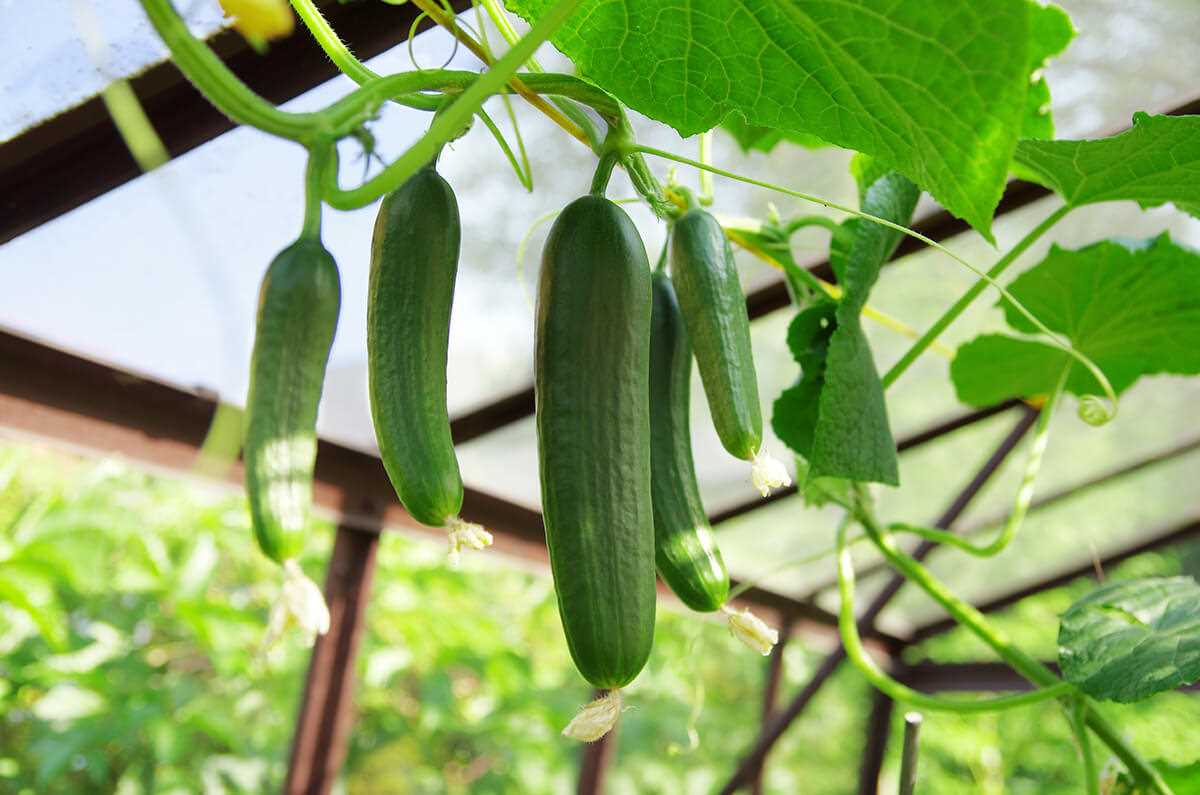
In conclusion, bees play a crucial role in the pollination process of cucumber plants. By attracting and supporting bees in your garden, you can ensure effective pollination, resulting in healthy cucumber plants and a bountiful harvest of delicious cucumbers.
Staking and Supporting Cucumber Plants
When it comes to growing cucumbers in the ground, one important consideration is whether or not to stake or support the plants. This decision depends on various factors, including the cucumber variety, available space, and personal preference.
Staking
Staking cucumbers involves using stakes or other support structures to keep the plants upright as they grow. This method is particularly useful for vining or sprawling cucumber varieties that can easily spread across the ground.
To stake cucumbers, start by driving a sturdy stake into the ground near each plant. The stake should be at least 5 feet tall, allowing the cucumber vines to grow vertically. As the plants grow, gently tie the vines to the stakes using soft string or twine. This will provide support and prevent them from sprawling on the ground.
Staking cucumbers offers several advantages. Firstly, it keeps the fruits off the ground, reducing the risk of rot and pests. It also improves air circulation and sunlight exposure, which can help prevent fungal diseases. Additionally, staking saves space in the garden by allowing vertical growth.
Supporting
Supporting cucumbers is another option, especially for bush or compact varieties. Instead of staking, you can use cages, trellises, or other support structures to keep the plants upright.
To support cucumber plants, place a cage or trellis around each plant when it is still small. As the plants grow, they will naturally grow through the support structure. This method offers the same benefits as staking, such as keeping the fruits off the ground, improving air circulation, and saving space.
When choosing a support structure, consider the weight of the cucumbers and the strength of the structure. Cages made of wire mesh or trellises made of sturdy poles and twine are popular options.
Conclusion
Deciding whether or not to stake or support cucumber plants depends on various factors. Both methods offer benefits for growing cucumbers in the ground, such as preventing rot, improving air circulation, and saving space. Consider the cucumber variety, available space, and personal preference when deciding whether to stake or support your cucumber plants.
“Question-Answer”
Should I tie up my cucumber plants?
Yes, it is generally recommended to tie up cucumber plants for better support and growth. Tying them up helps to prevent the vines from sprawling on the ground, which can lead to disease and pest issues. It also allows the plants to receive more sunlight and improves air circulation, reducing the risk of fungal diseases.
What is the best way to tie up cucumber plants?
The best way to tie up cucumber plants is by using soft plant ties or twine. You can gently wrap the ties around the main stem of the plant and secure it to a sturdy support, such as a trellis or a stake. Make sure not to tie it too tightly to avoid damaging the stem. As the plants grow, you may need to adjust the ties and add additional support if necessary.
Can I grow cucumbers without tying them up?
Yes, you can grow cucumbers without tying them up, especially if you have plenty of space for the vines to sprawl. However, it is important to note that tying them up offers several benefits, such as better support, improved air circulation, and reduced risk of disease. If you choose not to tie them up, make sure to provide enough space for the vines to spread out and monitor them closely for any signs of disease or pest infestation.
What are the advantages of tying up cucumbers?
Tying up cucumbers offers several advantages. Firstly, it provides better support for the plants, preventing them from sprawling on the ground and reducing the risk of disease and pests. Secondly, tying them up improves air circulation around the plants, which can help prevent the development of fungal diseases. Lastly, it allows the plants to receive more sunlight, promoting better growth and higher yields.
Can I use any type of support for tying up cucumbers?
You can use various types of support for tying up cucumbers, such as trellises, stakes, or even wire cages. The key is to choose a support that is sturdy enough to hold the weight of the plants and allows the vines to grow upward. Additionally, make sure the support is tall enough to accommodate the height of the cucumber plants and provides enough space for the vines to spread out.
When is the best time to start tying up cucumber plants?
The best time to start tying up cucumber plants is when they are young and have reached a height of about 6-8 inches (15-20 cm). At this stage, the plants are still flexible and easier to train onto the support. If you wait too long to start tying them up, the vines may become tangled and difficult to manage. It is important to regularly monitor the growth of the plants and start tying them up as soon as they are tall enough.
What should I do if cucumber plants outgrow the support?
If your cucumber plants outgrow the support, you can gently prune the vine tips to control their growth. Trim back the vines to a length that allows them to fit within the available support. Be careful not to remove too many leaves or branches, as they play a crucial role in photosynthesis and fruit development. Additionally, you may need to provide additional support or adjust the existing support to accommodate the increased size of the plants.







